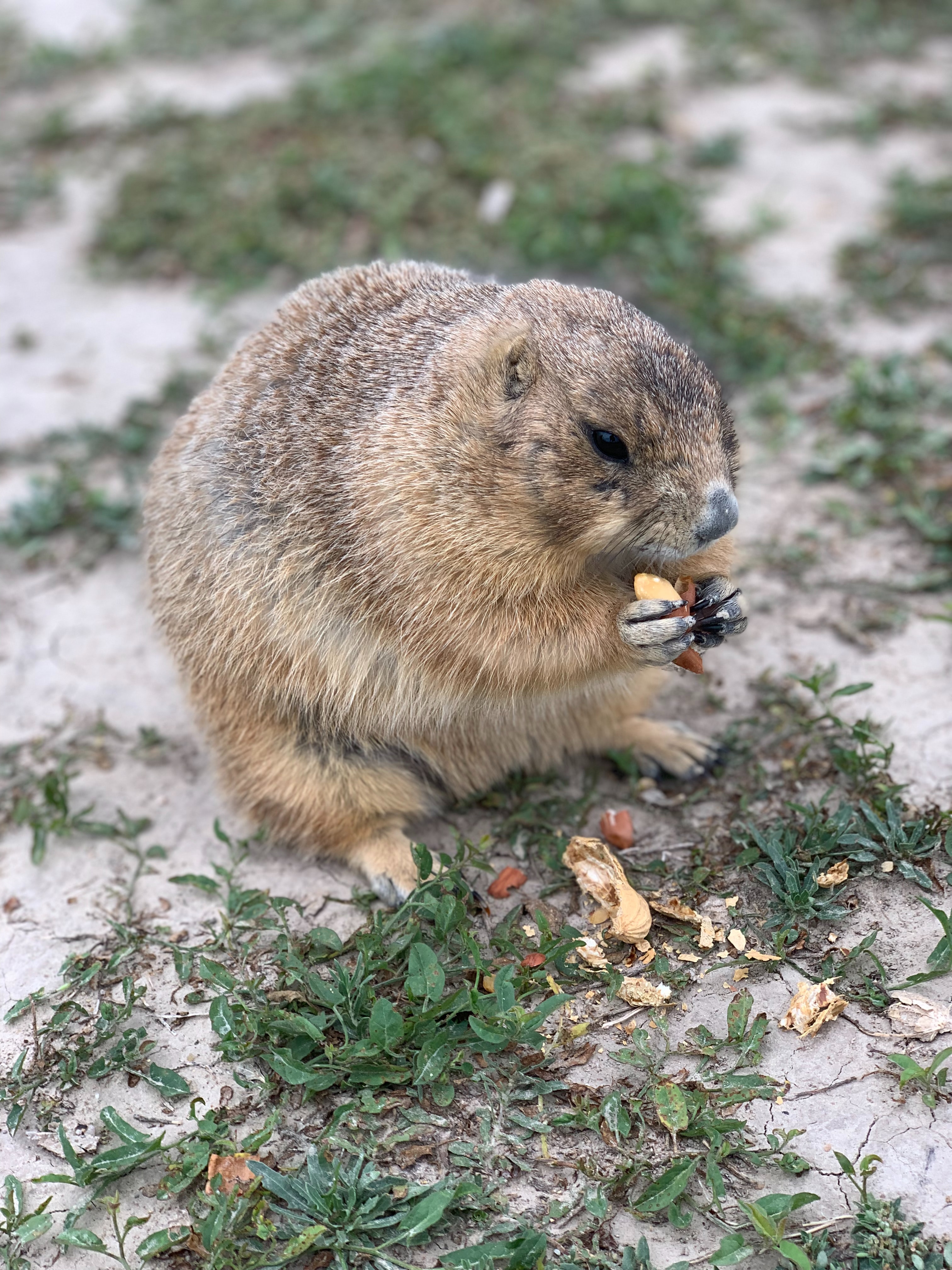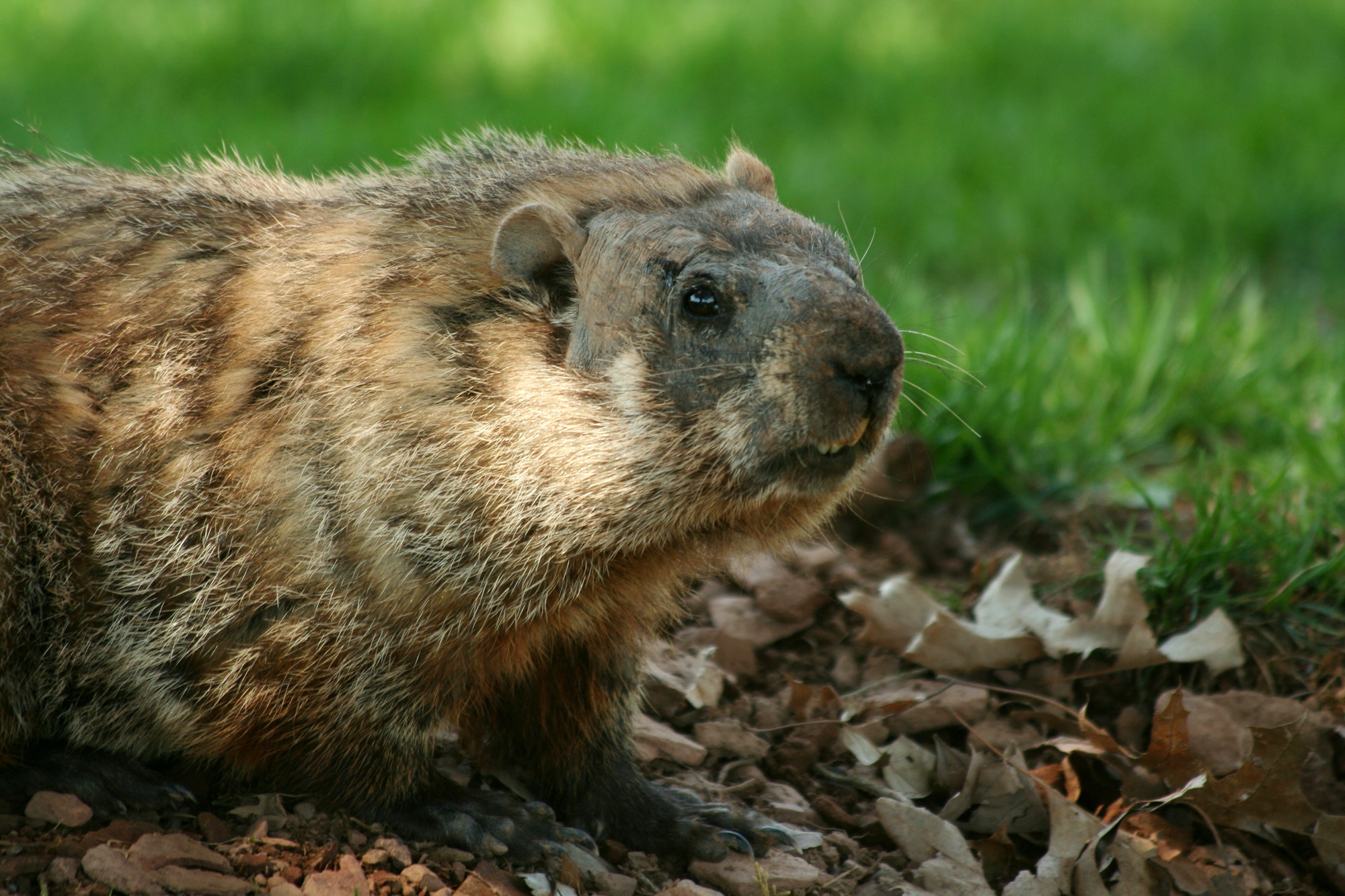What Are Woodchucks?
Woodchucks, also known as groundhogs, are short-legged rodents that live in North America. They are a part of the squirrel family. While woodchucks are thought to throw wood as their name states, they actually do not do that. In reality, they toss dirt whenever they build their burrows. Fully grown woodchucks can grow as large as twenty inches long and weigh as much as five to twelve pounds. Groundhogs have a tail, which is roughly a quarter of the size of their bodies. On average they live from five to six years. They have the ability to dig holes in the ground, which are clearly visible from above. They are also able to swim and climb. Woodchucks are diurnal, which means that they are awake during the day and sleep at night. Groundhogs have teeth that continually grow, so they have to keep them shortened by wearing them down with leaves and grass.
They also hibernate mainly through November until March, and during that time period, their heartbeats slow down. Groundhogs are mainly vegetarians, but they also eat some insects. Their diet consists mostly of berries, flowers, leaves, grass, and the bark off of hickory and maple trees. Their burrows, where they live, consisting of a hole dug into the ground that can be six feet deep and twenty feet wide. Their burrows can have as few as one entrance and as many as four entrances. Their burrows serve as their protection from their few predators, including foxes, hawks, and some dogs. If a groundhog’s burrow doesn’t protect it from predators, woodchucks are willing to fight using their sharp claws and long teeth. Woodchucks are slow runners, so their sharp claws are very useful in critical situations.

Woodchucks can cause havoc in yards and gardens, but they are not known for being aggressive. Homeowners and gardeners can prevent groundhogs from damaging their lawns and gardens by installing a three to four-foot fence around the perimeter of their yards or gardens. If a fence by itself doesn’t prevent groundhogs, a small electrical fence can also help keep woodchucks out of unwanted areas. Woodchucks are easily frightened, and they often go into their burrows when scared. They are alarmed by new environments and even humans. Just the scent of people is enough to scare woodchucks away.

Another thing that easily frightens groundhogs are their own shadows. Starting in the late nineteenth century, Germans began to use groundhogs as a sign as if their shadows were visible, it was sunny outside. This was the beginning of Groundhog Day, which happens every year on February second. While groundhogs aren’t always accurate when determining if winter will continue or spring will start, it is always a fun tradition to see if the groundhog will be able to see its own shadow. Festivals for the occasion are held worldwide, and it is a source of entertainment and wonder for many.
Woodchucks have been chosen for research topics such as hepatitis B. This study was conducted by Dr. Thomas Michala from Memorial University in Newfoundland. Dr. Michala chose woodchucks for his study of hepatitis B because woodchucks seem similar to humans in the way that they both develop diseases. Dr. Michala uses his colony of woodchucks to test drugs and preventative methods for hepatitis B and in some cases, HIV. The research that has been done in the past several years has taught the doctors that small amounts of diseases like hepatitis B stay in humans or woodchucks even years after recovery. The woodchucks chosen to help with Dr. Michala’s research are very critical and important, because they help with researching, testing drugs and preventatives, and evaluating methods to prevent certain diseases.








